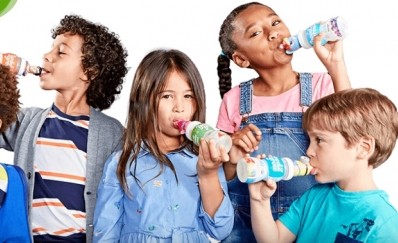PMG: Throw out marketing playbook and adopt watch-and-respond approach to consumer sentiment

“In 2020, brands are going to have to invest in monitoring the consumer landscape and being on top of consumer insights and social sentiment more than ever before because the climate is changing so rapidly,” said Angela Seits, senior director of consumer insights and engagement strategy for PMG.
She explained that any actions she recommends or brands take today might change tomorrow given how quickly the political, social and economic climate in the US is evolving.
“It is really more about actually being in touch with consumers, seeing how their mindsets shift and making corresponding shifts in advertising strategies and business strategies,” she said.
For example, she noted, when the coronavirus outbreak first hit the US several brands were criticized for being tone deaf for letting their business-as-usual advertising campaigns continue even though the products might not be relevant to consumers in the moment or in stock.
As the scope of the pandemic set in, Seits said, brands rightly paused campaigns for non-essential items and promotions that could have further fueled stockpiling. Once consumers settled in to their new normal and supply chains recovered, brands were able to slowly begin advertising again with a heavy focus either on brand awareness or showing how non-essential items offer added-value though the context of offering a sense of fun, escape or a way to celebrate despite physical distancing.
The key to the successful reintroduction of advertising during the pandemic – and any moment – is to “talk about how a brand can be relevant to consumers lives regardless of whatever moment or issues is happening in the world right now. Advertising is always about relevance to consumers’ lives and that means that [brands] think about their advertising strategy from the understanding of how a product provides value to consumers,” Seits explained.
For example, before the pandemic, some brands advertised elaborate recipes using their food or beverage. But after the pandemic hit when consumers couldn’t access essential ingredients and they were challenged with crafting three plus meals for themselves and their families day after day – those elaborate recipes no longer resonated. So, Seits said, smart brands pivoted to offer simpler solutions using pantry staples or swappable ingredients depending on what consumers had on hand.
Other examples of successful advertising during the pandemic focused on safety, as illustrated by Butcher Box’s and Thrive Market’s campaigns that showed consumers how they could have high quality food delivered to their door without having contact with potentially ill people, Seits said.
Looking forward, she believes that safety will remain a top priority for consumers and that brands should communicate where their food comes from, how it is grown or made, what humane standards they have in place, how they are protecting workers and consumers, she said.
Consumers want promotions
While the decision to pause promotions during the height of panic-buying was a practical decision based on logistics, Seits said that consumers are eager for food and beverage promotions to return.
“Consumers really do want to see promotions from brands to the grocery space because even consumers who might not have been as budget-conscious previously are more budget-conscious now. So, they are looking for deals and promotions,” she said.
However, she cautioned, brands still “need to be sensitive about that advertising and make sure it doesn’t come across as taking advantage or insensitive” of the larger issues at play.
“The other thing to keep in mind about promotions would be being strategic about whether they are advertising for online or for an in-store shopping experience because they may be advertising to very different consumers,” Seits said.
Regaining or retaining consumer loyalty
During the peak of the pandemic when consumers were struggling to fill their carts they gravitated towards brands with which they were already familiar, but if those weren’t available they simply purchased what was.
For some brands this means they gained new consumers who might not have tried their products otherwise and for others it meant they lost market share. In both cases, Seits, said brands will need to focus upcoming advertising on either regaining or retaining those consumers.
The strategy for both will need to focus on brand awareness, communicating values and value and potential promotions that either reinforce new habits or bring consumers back into the fold, Seits said.
“Silence should be recognized as a communication, too”
Just as brands were starting to understand consumer sentiments around the pandemic and craft marketing and advertising in response, protests against racism began to reshape the political, social and economic landscape again – proving Seits point about companies needing to constantly monitor consumer sentiment and adjust advertising and communication accordingly.
While Seits said companies’ decisions to align with a cause or social justice movement “is always a very complex issue … that can’t be covered in a short conversation or short sound bite,” she advised companies to think about how their core value and their customers values align with the cause and whether they have a history of demonstrating their commitment to that cause.
She also noted “there are always risks in any communication and silence should be recognized as a communication, too.”
She added that “although timely communication is essential – the best advice is always when in doubt, pause and try to avoid being reactive or emotion when determining your approach.”
Digital advertising offers more flexibility
Given the speed with which consumers’ worlds are changing and with which brands must respond, Seits recommends that companies invest more heavily in digital advertising rather than traditional options.
“This situation has been further proof that companies need to invest in digital advertising and it has really accelerated the” switch from traditional advertising investment, Seits said.
She explained before COVID-19 and the current protests “brands really didn’t have the luxury of having long planning lifecycles in order to keep up with change in consumer culture, and now they don’t have that luxury at all. There definitely is not time to plant months and months ahead for a creative photoshoot or really complex marketing strategy. Brands have to be swift and nimble and able to keep up. And in order to do so, digital channels are really effective at allowing them pivot quickly.”

















